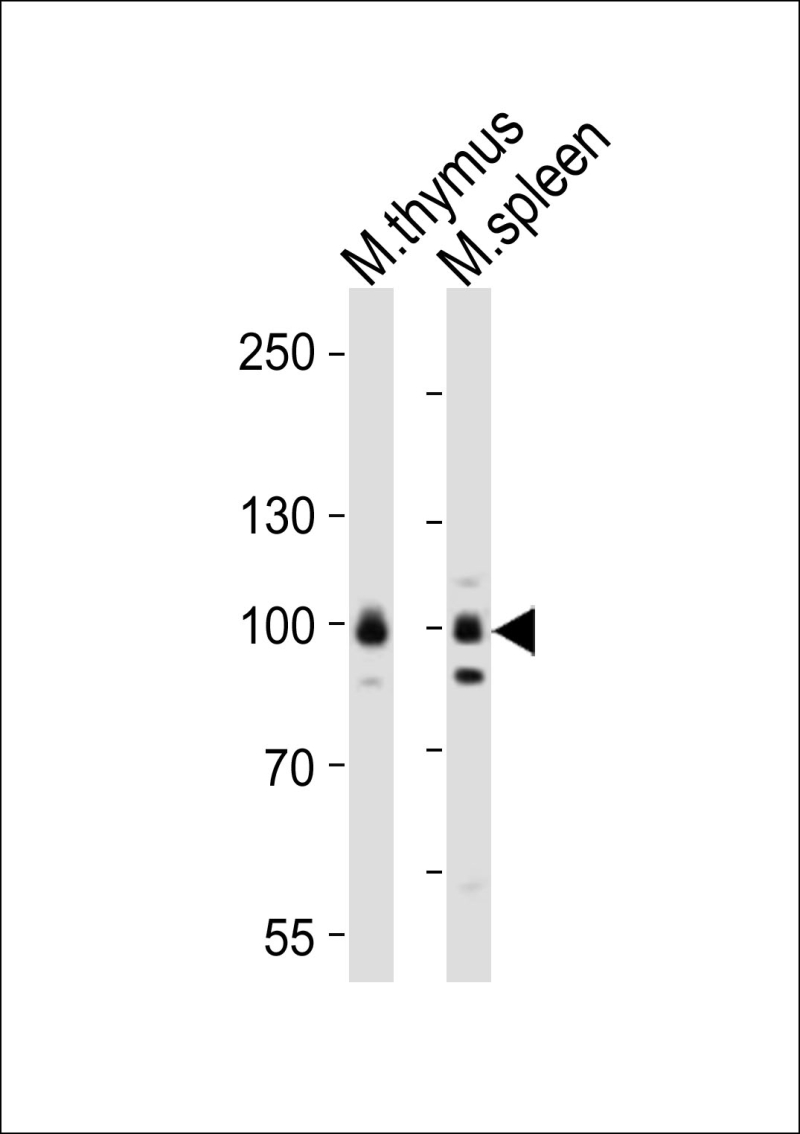
| WB | 1/1000 | Human,Mouse,Rat |
| IF | 咨询技术 | Human,Mouse,Rat |
| IHC | 咨询技术 | Human,Mouse,Rat |
| ICC | 技术咨询 | Human,Mouse,Rat |
| FCM | 咨询技术 | Human,Mouse,Rat |
| Elisa | 咨询技术 | Human,Mouse,Rat |
| Aliases | Ribosomal protein S6 kinase alpha-5, S6K-alpha-5, 90 kDa ribosomal protein S6 kinase 5, Nuclear mitogen- and stress-activated protein kinase 1, RSK-like protein kinase, RLSK, Rps6ka5, Msk1 |
| Entrez GeneID | 73086 |
| WB Predicted band size | 96.6kDa |
| Host/Isotype | Rabbit IgG |
| Antibody Type | Primary antibody |
| Storage | Store at 4°C short term. Aliquot and store at -20°C long term. Avoid freeze/thaw cycles. |
| Species Reactivity | Mouse |
| Immunogen | This Mouse Rps6ka5 antibody is generated from a rabbit immunized with a KLH conjugated synthetic peptide between 850-883 amino acids from the C-terminal region of Mouse Rps6ka5. |
+ +
以下是关于Mouse Rps6ka5(MSK1)抗体的3篇参考文献,简要概括如下:
---
1. **文献名称**:*Mitogen- and stress-activated protein kinase-1 (MSK1) is directly activated by MAPK and SAPK2/p38. and may mediate activation of CREB*
**作者**:Deak, M., Clifton, A.D., Lucocq, J.M., & Alessi, D.R.
**摘要**:该研究首次克隆并鉴定了MSK1(即Rps6ka5),开发了特异性抗体用于检测其表达和磷酸化状态,揭示了MSK1受MAPK通路激活,并可能通过磷酸化CREB调控基因表达。
---
2. **文献名称**:*MSK1 activity is controlled by multiple phosphorylation sites*
**作者**:McCoy, C.E., Campbell, D.G., Deak, M., et al.
**摘要**:文章系统分析了MSK1的磷酸化位点,利用小鼠模型和特异性抗体(包括抗Rps6ka5抗体)验证其活性调控机制,发现其通过ERK/p38激酶级联反应激活,并参与炎症反应。
---
3. **文献名称**:*A crucial role for S6K-mediated phosphorylation of MSK1 in the dynamic regulation of transcription*
**作者**:Darieva, Z., Webber, A., Warwood, S., et al.
**摘要**:研究通过免疫沉淀和Western blot(使用小鼠Rps6ka5抗体)证明S6K对MSK1的磷酸化调控,揭示了其在转录动态调控和细胞周期进程中的关键作用。
---
**注**:若需具体实验应用(如WB、IHC等),建议参考抗体供应商(如CST、Abcam)提供的文献引用列表,或通过PubMed高级检索筛选目标抗体相关研究。
The mouse Rps6ka5 antibody is designed to detect the ribosomal protein S6 kinase A5 (RPS6KA5), also known as mitogen- and stress-activated protein kinase 1 (MSK1), in murine samples. RPS6KA5 is a serine/threonine kinase activated by the MAPK and ERK signaling pathways, playing a critical role in regulating transcription through phosphorylation of histone H3 and transcription factors like CREB. It is involved in cellular processes such as proliferation, survival, differentiation, and responses to stress or inflammatory stimuli.
This antibody is commonly used in techniques like Western blotting, immunoprecipitation, and immunohistochemistry to study MSK1 expression, localization, and activity in mouse tissues or cell lines. Researchers employ it to explore signaling cascades in contexts such as cancer, neurological disorders, and immune responses. Specific validation (e.g., knockout controls) ensures its reliability in distinguishing MSK1 from related kinases.
Studies using mouse Rps6ka5 antibodies have contributed to understanding its role in epigenetic regulation, synaptic plasticity, and disease mechanisms, including tumor progression and neurodegeneration. Its cross-reactivity with mouse homologs makes it valuable for translational research bridging in vitro models and in vivo murine systems.
×